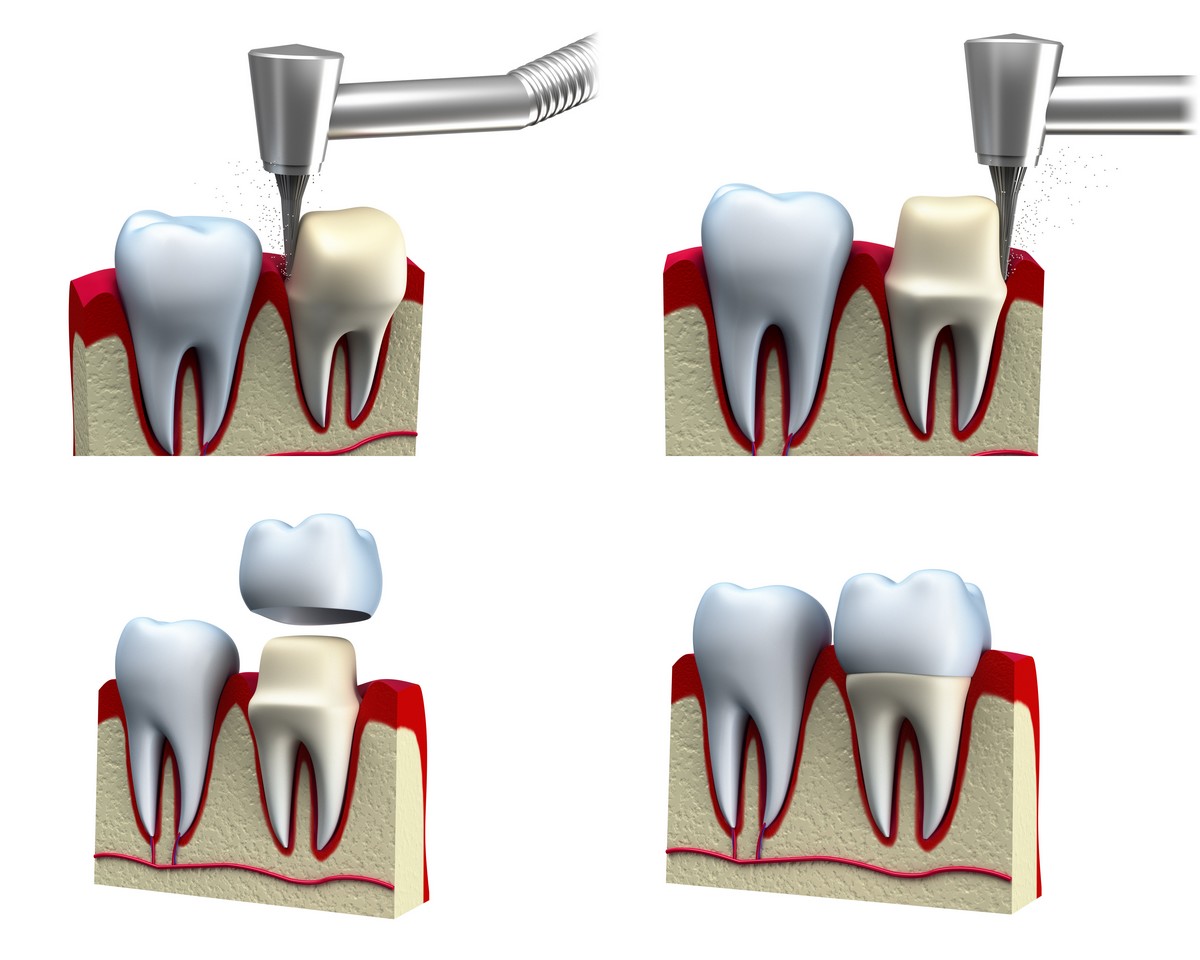A crown is a tooth-shaped cap, cemented on the existing tooth or implant/abutment. A dental crown can be used if your tooth is damaged, but not lost, meaning that at least the root is remaining. We also use crowns if the missing tooth is substituted by dental implant, but in this case we need an abutment to attach the crown to the artificial root.
A dental bridge is used to replace one or more missing teeth. It is basically a false tooth that fills the gap. The dentist will reduce (prepare) the teeth on either side of the space. These adjacent teeth will be the pillars of the bridge.
 When is a dental crown needed?
When is a dental crown needed?
- to restore a broken tooth, or a tooth in wrong position;
- to cover a damaged tooth, for instance with large filling where the tooth can’t be restored with new fillings;
- if a tooth has been root canal treated, a crown provides a strengthening effect and helps to prevent fracture;
- to hold a dental bridge.
What can a dental crown or bridge be made of?
- Metal ceramic: Porcelain fused to metal. It is the most common type of crown. A very strong, long lasting and affordable choice.
Disadvantage: In case of receding gums, the grey metal base of the crown begins to appear around the gum line. - Zirconia: Metal free, translucent and therefore natural looking. A very durable, cost-effective and allergy-free choice.
Disadvantage: Costs more than metal ceramic crowns. - Press-ceramic: Made entirely out of porcelain. The primary reason to use it is aesthetics. Looks exactly like a natural tooth.
Disadvantage: Not as durable as other types of crowns. Higher price. Recommended for front teeth/teeth visible when smiling. - Other crowns; Bio HPP , gold-ceramic.
During the consultation with the dentist, you’ll have the oportunity to discuss which crown to choose.
